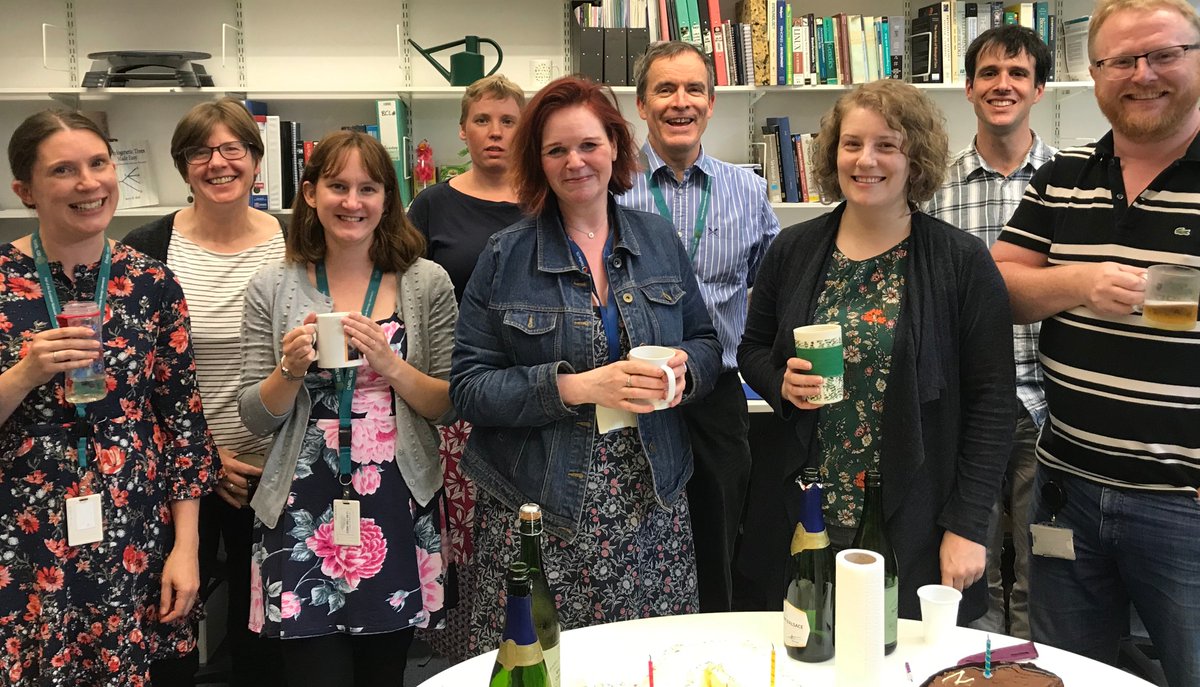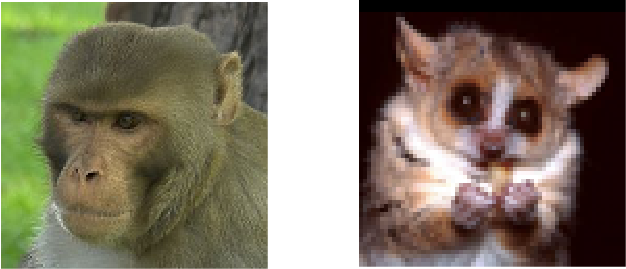Summer newsletter 2019
HGNC, VGNC, Newsletters ·
The HGNC is 40!
We are excited to announce a significant birthday for the HGNC – it is now 40 years since the first full human gene nomenclature guidelines were published, following discussions at the 1979 Human Genome Meeting in Edinburgh, Scotland. We are proud to be able to call ourselves one of the longest standing biocuration projects and we look forward to taking the project into its fifth decade. The whole team celebrated with cake!

The addition of public curator notes to Symbol Reports
We have added a new field to the core data section of our Symbol Reports entitled ‘Curator Notes’. This field allows us to add free text to our Reports to clarify certain aspects of the symbol, name or locus type. For example, the Symbol Report for GULOP displays the text: ‘This pseudogene has been named based on its functional ortholog in another species’ as GULOP has no human parent gene but is named relative to the protein coding mouse ortholog Gulo; the Symbol Report for C9orf72 displays the text ‘The community currently endorses the use of this placeholder symbol. HGNC has no current plans to update this symbol without community consensus’ because this symbol appears in such an overwhelming number of recent publications.
Changes to our withdrawn entries
We have recently improved the way we display and support searching of our withdrawn entries. These changes have been made in preparation for the upcoming withdrawal of HGNC phenotype entries, as we no longer approve symbols for phenotypes. All requests for new phenotype symbols should be directed to OMIM.
To make withdrawn entries obvious we have added a red warning triangle followed by the text ‘This record has been withdrawn by HGNC’ to the top of each relevant Symbol Report. We have added a new field ‘Symbol Status’ which displays the text ‘Entry Withdrawn’, text which instead used to appear in both the approved gene name and the locus type fields. This means we are now able to display the former approved gene name and locus type for these entries, which were previously missing. Withdrawn entries may also contain the curator notes field, which we plan to use to provide information on the withdrawn phenotype entries in the future.
The gene symbols of withdrawn entries were also previously displayed with the term ~withdrawn appended after the symbol, which meant that in order to find withdrawn entries on genenames.org it was necessary to add a wildcard when using our ‘Search all’ function, i.e. the search term BLYM* was necessary to return BLYM~withdrawn. You can now find the correct withdrawn entry using the former approved symbol. To allow filtering of withdrawn entries, we have added the facet ‘Filter by gene entry status’ to our search function. If search results contain withdrawn entries, this filter gives the option ‘Entry withdrawn’ in addition to ‘Approved’, e.g. searching with the root symbol CYP* shows that there are 3 withdrawn entries, in addition to the 131 approved entries.
Macaque (and a little mouse lemur) now in VGNC!

Regular readers may remember from our last newsletter that we were in the process of adding approved gene symbols for rhesus macaque into vertebrate.genenames.org. We are happy to announce that we have now added this species to our project and have already approved an impressive 10989 macaque gene symbols! You can browse through these symbols by choosing the Gene Symbol Reports dropdown from the Gene Symbol Data tab and selecting ‘Macaque’ from the Species filter on the left-hand side. You can download all macaque data by visiting the VGNC Statistics & Downloads files and selecting ‘Macaque’ from the Species dropdown box at the top of the page.
We have also added a small number of gene symbols for the (extremely cute) mouse lemur species. All of these genes are part of the cytochrome P450 (CYP) family and were manually curated by our CYP expert, David Nelson. We are going to be adding CYP genes for other primate species in the near future, so please watch this space. David kindly provided a recent blog post for us called ‘Seeing Red’ about two separate CYP genes that allow some fish (CYP27C1) and birds (CYP2J19) to see in infra-red, and also allow some birds to have red plumage, beaks and/or legs.
Progress on replacing placeholder symbols
Renaming placeholder symbols to provide more informative nomenclature that is transferable across species continues to be a priority for the HGNC. Here are some examples of placeholders that we have renamed in the last couple of months, along with links to their renamed VGNC orthologs, which all have the same informative symbol as human:
C6orf222 to BNIP5, BCL2 interacting protein 5 chimp, cow, dog, horse, cat.
C6orf203 to MTRES1, mitochondrial transcription rescue factor 1 chimp, cow, dog, horse.
C12orf81 to TMDD1, transmembrane and death domain 1 (no orthologs identified via the VGNC pipeline at this time).
FAM57A to TLCD3A, TLC domain containing 3A chimp, cow, dog, horse, cat, macaque.
FAM57B to TLCD3B, TLC domain containing 3B chimp, cow, cat.
FAM173A to ANTKMT, adenine nucleotide translocase lysine methyltransferase chimp, cow, cat, macaque.
Gene Symbols in the News
Two of our symbols have appeared in news articles about treating disease using therapies targeted to specific genes and their products. Gene therapy is already successfully being used to treat hereditary transthyretin-mediated amyloidosis − RNA interference of mutated TTR (transthyretin) mRNA prevents the build-up of toxic TTR protein in carriers and has allowed a surgeon with the disease to continue his career. There is hope for the future development of an effective therapy to treat patients with ALS caused by expansion repeats in the now-famous C9orf72 gene: research in yeast found that inhibiting the activity of the RPS25 protein could halt the accumulation of toxic proteins produced from the repeat expansions in the C9orf72 promoter region. This means that a RPS25-targeted treatment may one day be possible if the same effects are reproducible for humans.
There have also been several articles linking genes to incidence of disease. Pseudogenisation of the CMAH gene (approved gene symbol CMAHP note the ‘P’ for pseudogene in the gene symbol as a result) in humans could explain why we are more susceptible to heart attacks than other great apes. The loss of the encoded CMAH enzyme means that humans do not produce N-glycolylneuraminic acid and as a result when humans consume dietary sources of this sialic acid from red meat, there may be an increased immune response leading to increased inflammation and possibly a higher likelihood of atherosclerosis. A mutation in the MEMO1 gene that may affect the development of the cortex has been linked to autism spectrum disorder. Researchers have found that roughly half of all people carry a mutation in the CLTCL1 gene that has been associated with an increased rate of glucose clearance and a resulting decreased risk of type 2 diabetes. The protective CLTCL1 variant increased within the human population during the advent of cooking.
Meeting News
Tamsin attended the Quest for Orthologs 6 (Okazaki, Japan) conference from 31 July-2 August 2019 where she gave a talk entitled ‘Assigning Standardized Gene Nomenclature To Vertebrate Orthologs: Updates From The Vertebrate Gene Nomenclature Committee’.
Ruth will be attending the forthcoming RNA Informatics meeting in Hinxton, UK from 9-11 September. There will be more news on this meeting in our next newsletter.
